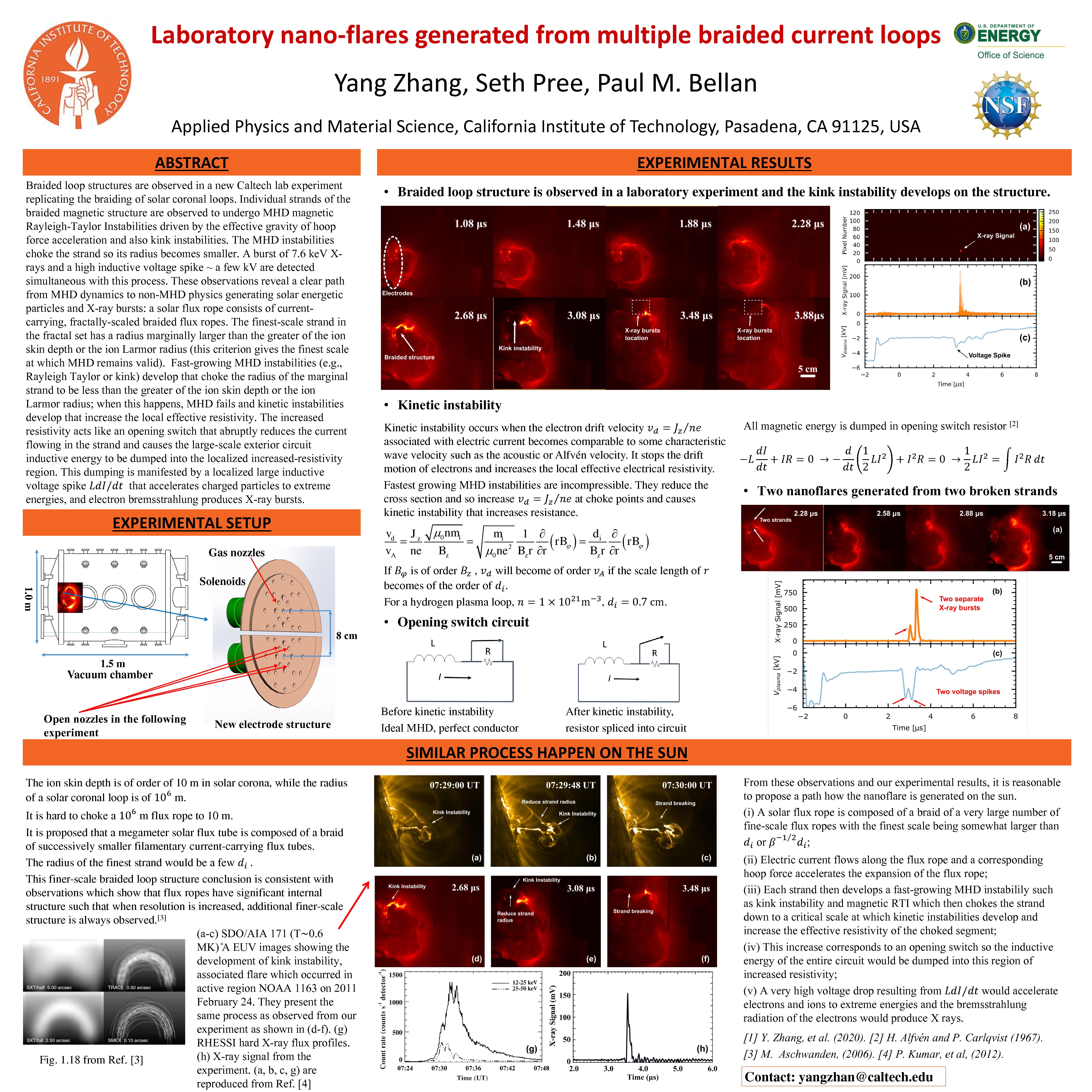Authors: Seth Pree(Caltech), Paul M. Bellan(Caltech)
Braided loop structures are observed in a new Caltech lab experiment replicating the braiding of solar coronal loops. Individual strands of the braided magnetic structure are observed to undergo MHD magnetic Rayleigh-Taylor Instabilities driven by the effective gravity of hoop force acceleration and also kink instabilities. The MHD instabilities choke the strand so its radius becomes smaller. A burst of 7.6 keV X-rays and a high inductive voltage spike ~ 4 kV are detected simultaneous with this process. These observations reveal a clear path from MHD dynamics to non-MHD physics generating solar energetic particles and X-ray bursts: a solar flux rope consists of current-carrying, fractally-scaled braided flux ropes. The finest-scale strand in the fractal set has a radius marginally larger than the greater of the ion skin depth or the ion Larmor radius (this criterion gives the finest scale at which MHD remains valid). Fast-growing MHD instabilities (e.g., Rayleigh Taylor or kink) develop that choke the radius of the marginal strand to be less than the greater of the ion skin depth or the ion Larmor radius; when this happens, MHD fails and kinetic instabilities develop that increase the local effective resistivity. The increased resistivity acts like an opening switch that abruptly reduces the current flowing in the strand and causes the large-scale exterior circuit inductive energy to be dumped into the localized increased-resistivity region. This dumping is manifested by a localized large inductive voltage spike LdI/dt that accelerates charged particles to extreme energies, and electron bremsstrahlung produces X-ray bursts.


